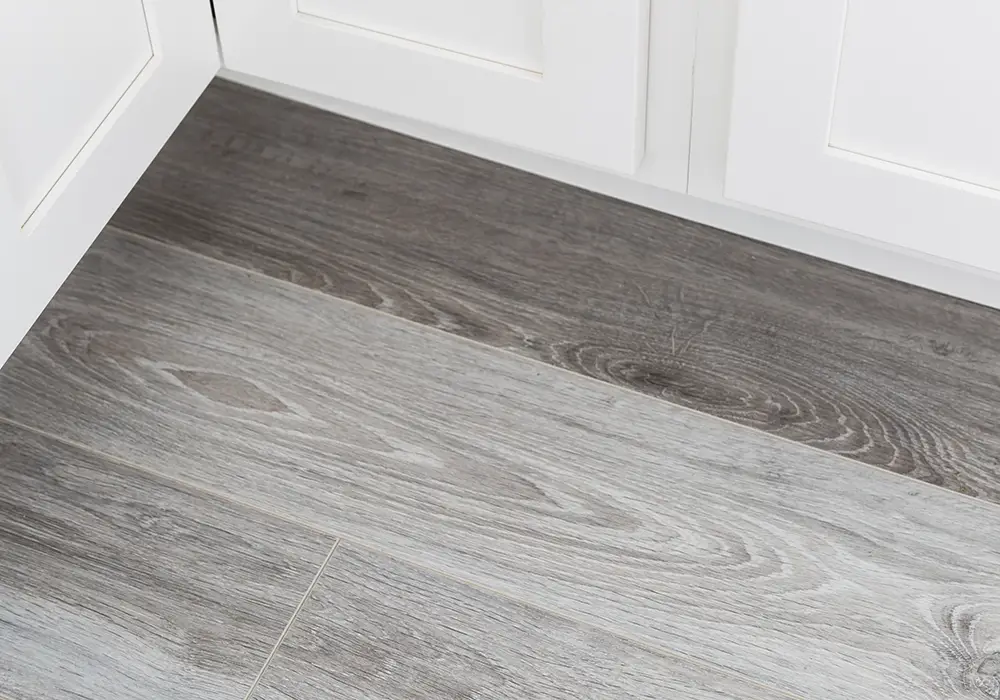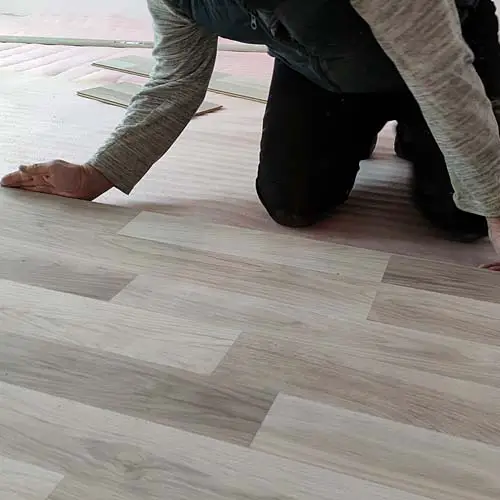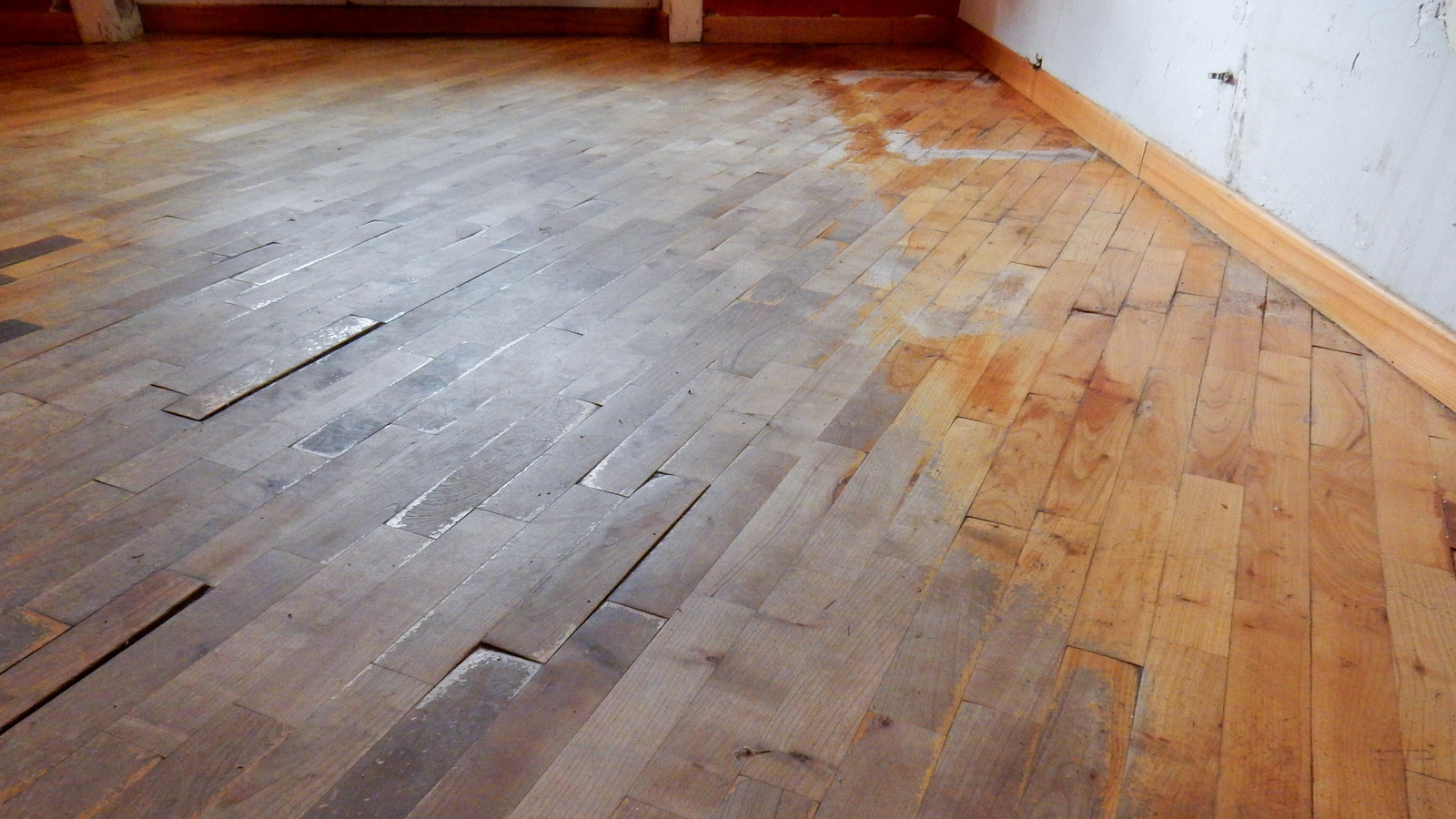Experiencing a bouncy sensation when you walk on your laminate flooring can be disconcerting, and it’s an issue more homeowners are encountering. This article aims to help you understand why your laminate flooring feels bouncy and provide practical solutions to address this problem.
From improper installation to inadequate subfloor preparation, various factors can lead to this unsettling phenomenon. Let’s delve deeper into these causes and explore how you can restore the firm and stable feeling of your laminate flooring.
Laminate flooring is a multilayer synthetic flooring product, designed to mimic natural materials such as wood or stone. It is highly durable, easy to install, and cost-effective, which makes it a popular choice for homeowners.
Its structure typically consists of four layers: a wear layer, a design layer, an inner core layer, and a backing layer.
One of the main reasons why laminate flooring might feel bouncy is due to an issue called “deflection.” This occurs when the laminate flooring isn’t properly supported by the subfloor beneath it, causing it to move or “deflect” when weight is applied.
This can be due to a variety of factors such as an uneven subfloor, improper installation of the laminate flooring (such as not leaving enough gap for expansion and contraction), or using a low-quality underlayment that doesn’t provide adequate support.
Over time, this deflection can cause your laminate flooring to feel bouncy when you walk on it.
Common Causes of Bouncy Laminate Flooring

Insufficiently Acclimated Flooring
Another frequent cause of bouncy laminate flooring is insufficient acclimation of the flooring material before installation. Laminate flooring is a product sensitive to its environment, especially temperature and humidity.
It’s essential to allow the laminate to acclimate to the conditions of the room where it will be installed, ideally for a duration of 48 to 72 hours.
This enables the material to adjust to the room’s specific temperature and humidity level, reducing the risk of later warping or deflection. If the acclimation process is rushed or skipped entirely, the laminate flooring may expand or contract after installation, resulting in a bouncy or uneven floor surface.
Incorrectly Installed Underlay
An additional cause of bouncy laminate flooring pertains to incorrect installation of the underlay. The underlay, which sits between the laminate flooring and the subfloor, plays a crucial role in supporting the flooring and providing a level surface for installation.
If the underlay is installed improperly, it can lead to instability in the flooring. This could be due to the use of a thin, low-quality underlay, or failure to cover the entire floor surface with the underlay.
Moreover, overlaps or gaps in the underlay can create uneven sections, causing the laminate flooring to deflect or bounce.
Subfloor Issues
Subfloor problems constitute yet another common cause of bouncy laminate flooring. The subfloor serves as the foundational layer upon which the underlay and laminate flooring are installed.
Consequently, any irregularities or imperfections in the subfloor can translate into instability in the laminate flooring above. If the subfloor is uneven, it can cause depressions or raised areas in the laminate flooring, resulting in a bouncy feel when walked upon.
Furthermore, subfloors that are damp or not thoroughly cleaned before the installation of flooring can also cause problems. Moisture can warp the laminate material, while dust or debris can form uneven patches.
Uneven Base Floor
An uneven base floor can pose serious issues when installing laminate flooring. It’s a primary factor that can directly contribute to the bouncy or uneven surface of the laminate flooring.
The base floor, being the initial surface upon which everything else is layered, needs to be as flat and even as possible. If the base floor is uneven, it already begins the layering process on an unstable note, which can exacerbate with each subsequent layer.
Issues such as dips, bumps, or slopes in the base floor can cause the laminate flooring to be unstable and bouncy. Before any installation, it is pertinent to check the level and evenness of the base floor.
Any discrepancies should be rectified by using self-leveling compounds or by sanding down high spots, thus ensuring a firm, even surface for the following layers of underlay and laminate flooring.
Poor Quality Laminate
Another potential reason for bouncy laminate flooring may be the quality of the laminate itself. Not all laminates are created equal, and their strength and durability can vary greatly depending on the quality of the material used.
High-quality laminate flooring is typically made with dense fiberboard and a high-resolution photographic image, ensuring a sturdy and realistic appearance. On the other hand, lower-quality laminate may use less dense fiberboard and lower resolution imaging, resulting in a less stable and less realistic-looking floor.
Poor quality laminate is also more susceptible to damage from moisture and heavy foot traffic, which can lead to warping, swelling, and the eventual bouncy feel when walked upon.
How to Fix Bouncy Laminate Flooring

Addressing Underlay Issues
If you suspect that underlay issues might be the cause of your bouncy laminate flooring, the first step is to inspect the underlay for any signs of damage or wear. Begin by carefully removing a portion of the laminate flooring, taking care not to damage the interlocking edges.
Once the underlay is exposed, look for any obvious problems such as tears, thinning areas, or signs of moisture damage.
If problems are detected, you will need to replace the underlay. Choose a high-quality underlay that is appropriate for the type of subfloor in your home. For concrete subfloors, consider an underlay with a built-in moisture barrier to prevent any potential dampness from reaching the laminate.
If the subfloor is made of wood, a standard foam underlay will typically suffice.
Before laying down the new underlay, ensure that the subfloor is clean, dry, and flat. The underlay should be rolled out flat, with edges butted tightly together without overlapping.
Once the underlay is in place, you can reinstall the laminate flooring according to the manufacturer’s instructions.
Correcting Subfloor Problems
Subfloor Inspection
Inspecting the subfloor is a crucial step in resolving bouncy laminate flooring issues. Start by removing a part of the laminate flooring to reveal the subfloor, exercising caution to prevent damage to the laminate.
Once the subfloor is visible, examine it for inconsistencies like dips, bumps, or uneven surfaces. Look for noticeable problems such as rot, water damage, or mold growth. If there are noticeable squares when you walk on the subfloor, there are likely loose sections that need to be secured.
Subfloor Repair
If the subfloor is uneven or shows signs of damage, you’ll need to repair it before reinstalling the laminate flooring. Uneven subfloors can be leveled with a self-leveling compound, which is poured onto the subfloor and then spreads itself out to naturally find the level.
For wooden subfloors, any loose sections should be screwed down to the floor joists to eliminate movement. Damaged sections of the subfloor, whether from rot, mold, or water damage, should be cut out and replaced with new, similar material.
In cases of severe moisture-related issues, it may be necessary to consult with a professional to ensure the underlying cause of the moisture is addressed.
This could involve fixing leaking pipes, improving ventilation, or installing a subfloor designed to deal with damp conditions.
After all necessary repairs have been made, clean the subfloor thoroughly to remove any debris, dust, or remnants of the old underlay. Only when the subfloor is clean, dry, and level should you proceed with installing the new underlay and laminate flooring.
Replacing Poor Quality Laminate
Tips on Choosing High-Quality Laminate
When choosing high-quality laminate flooring, there are several factors you should consider:
Thickness: Opt for thicker laminate as it feels more solid underfoot, handles wear and tear well, and provides better insulation.
AC Rating: Laminate flooring is rated by the Abrasion Class (AC) system, which measures durability. An AC rating of 3 or above is suitable for residential use.
Underlay: Check whether the laminate comes with pre-attached underlay. This can save installation time and improve sound insulation, but separate underlay can provide superior moisture protection.
Board Edges: Look for laminate with beveled edges. These boards can better mimic real wood and add depth and character to a room.
Warranty: High-quality laminate flooring should come with a manufacturer’s warranty. This ensures the product is protected against defects for a certain period.
Steps on Replacing Laminate
Remove Existing Laminate: Begin by removing any furniture or obstacles from the room. Start at one end of the room and gradually remove the laminate pieces.
Prepare the Subfloor: Check the subfloor for any damages and repair if necessary. Clean the subfloor thoroughly to remove any debris or dust.
Install the Underlay: Roll out the underlay across the entire floor. Trim it to fit and tape the seams together.
Begin Installation: Start the installation in one corner of the room and work your way outwards. Use spacers to maintain a consistent gap between the laminate and walls.
Cut Laminate Pieces: Measure and cut the laminate pieces according to your desired pattern.
Install Laminate: Lay each piece of laminate in place, interlocking the edges as you go. Use a tapping block and hammer to secure the pieces in place.
Fill Gaps: If there are any gaps between the laminate and walls, use caulk to fill them in.
Add Finishing Touches: Install baseboards and transition pieces around the edges of the room for a polished look.
Clean Up: Sweep or vacuum the floor to remove any debris and wipe down with a damp cloth to remove any residue.
Related Topics:
Preventing Bouncy Laminate Flooring in the Future
Importance of correct installation
Correct installation of laminate flooring is of utmost importance for several reasons. Firstly, it ensures the longevity and durability of your flooring. Incorrect installation can lead to issues such as buckling, gaps, or even breakage, which may shorten the lifespan of your laminate.
Secondly, correct installation can prevent safety hazards. Loose or bouncy laminate can cause trips and falls.
Thirdly, it impacts the aesthetic appeal of your space. Laminate installed properly will look sleek and seamless, adding to the overall look of your room.
Lastly, the manufacturer’s warranty often hinges on correct installation. If the laminate is improperly installed, it may void the warranty, leaving you without protection against potential defects.
Role of High-Quality Materials
Choosing high-quality materials for your laminate flooring forms a critical part of the installation process. Not only do they contribute to the overall aesthetic appeal of your space, but they also play a significant role in the longevity and durability of the flooring.
High-quality materials have a better resistance to wear and tear, reducing the occurrence of problems like warping, buckling, or scratching. They are also less likely to contribute to a bouncy laminate floor.
The superior finish and feel of these materials can significantly enhance the value and comfort of your home. Moreover, most high-quality laminate materials come with an extended manufacturer’s warranty, providing an additional layer of protection for your investment.
Maintenance Tips for Laminate Flooring
Caring for your laminate flooring is crucial to maintain its quality, appearance, and lifespan. Regular sweeping or vacuuming can prevent the accumulation of dust and debris, which could potentially scratch the surface.
For deeper cleaning, use a damp mop with a mild detergent, but avoid soaking the floor. Excess water can seep into the seams and cause damage. To prevent scratches, place felt pads under furniture legs and avoid dragging heavy objects across the floor.
For the same reason, it is advisable to use soft indoor footwear. Lastly, address spills immediately to prevent staining or potential water damage.
Conclusion
In conclusion, a bouncy laminate floor can be unsettling, disrupting the comfort and beauty of your living space. However, with the right understanding of its causes and effective solutions, this problem can be addressed effectively.
From meticulous preparation of the subfloor to the correct installation of the underlay, and from choosing high-quality laminate materials to regular maintenance, each step plays a crucial role.
Most importantly, it’s essential to remember that laminate flooring is a significant investment in your home, and careful attention to each detail during installation will ensure a stable, durable, and aesthetically pleasing surface for years to come.
FAQs
Can I use a steam mop on my laminate flooring?
No, it is not recommended to use a steam mop on laminate flooring. The steam can seep into the seams and cause damage to the laminate layers, resulting in warping or swelling. It’s best to stick to a damp mop with a mild detergent for deep cleaning.
How often should I replace the underlay of my laminate flooring?
The underlay of laminate flooring typically lasts as long as the laminate itself, so you shouldn’t need to replace it unless you are replacing the flooring. However, if you notice areas of the floor becoming uneven or bouncy, it may be a sign that the underlay is wearing out and needs replacement.

1 thought on “Why Your Laminate Flooring Feels Bouncy and How to Fix It”